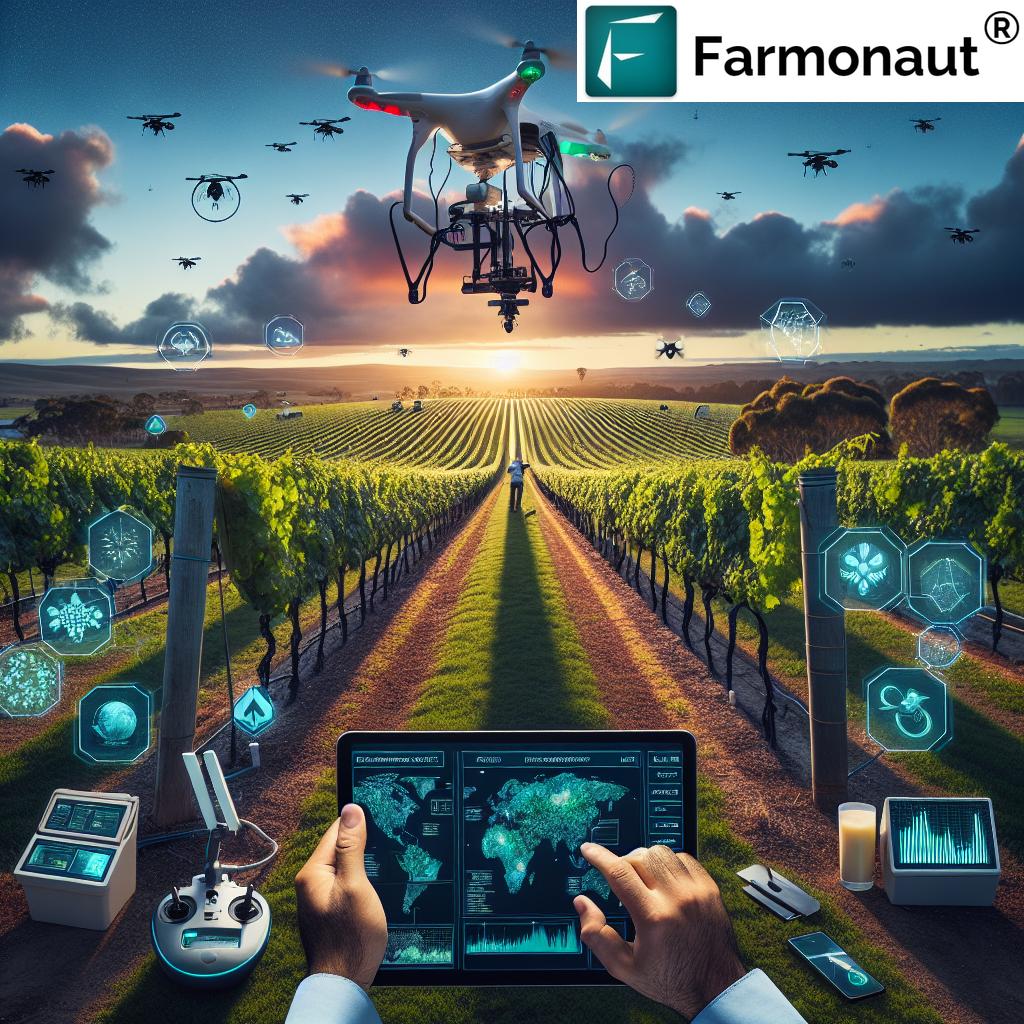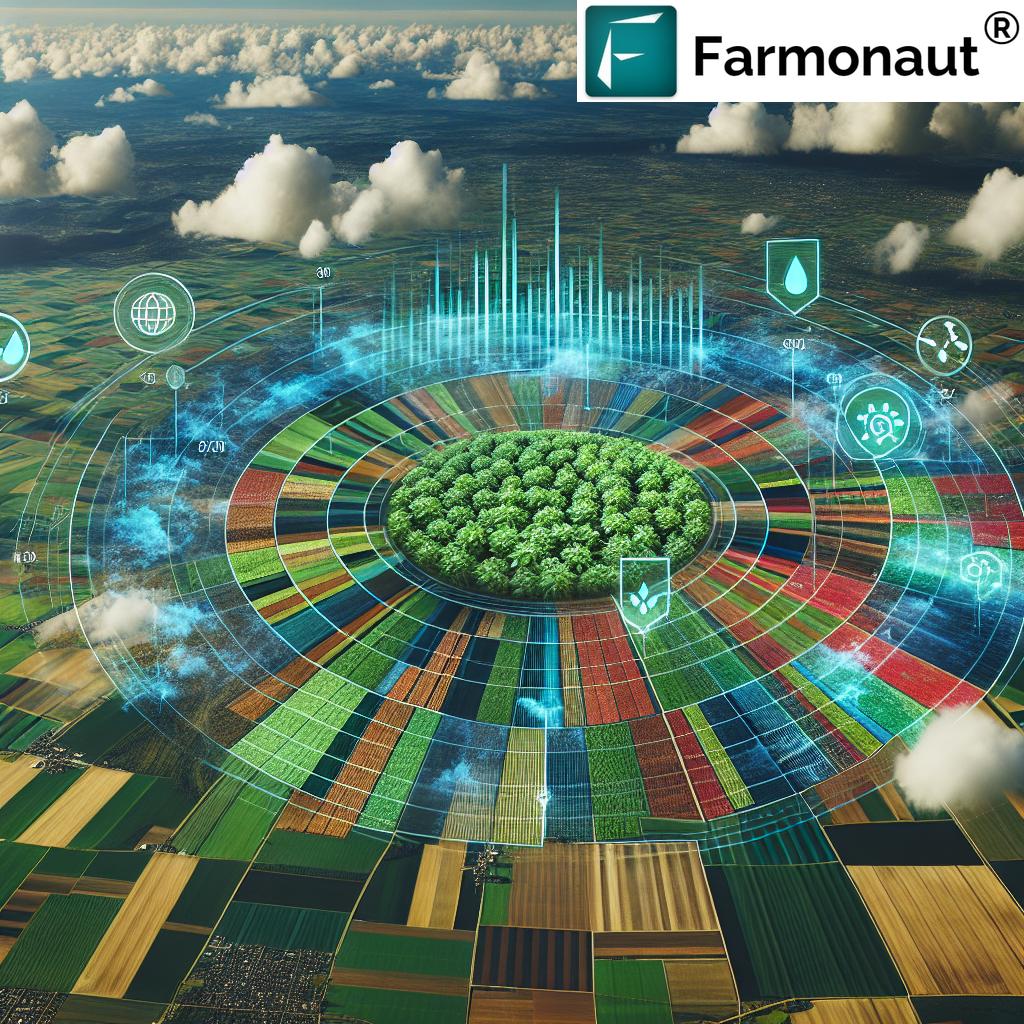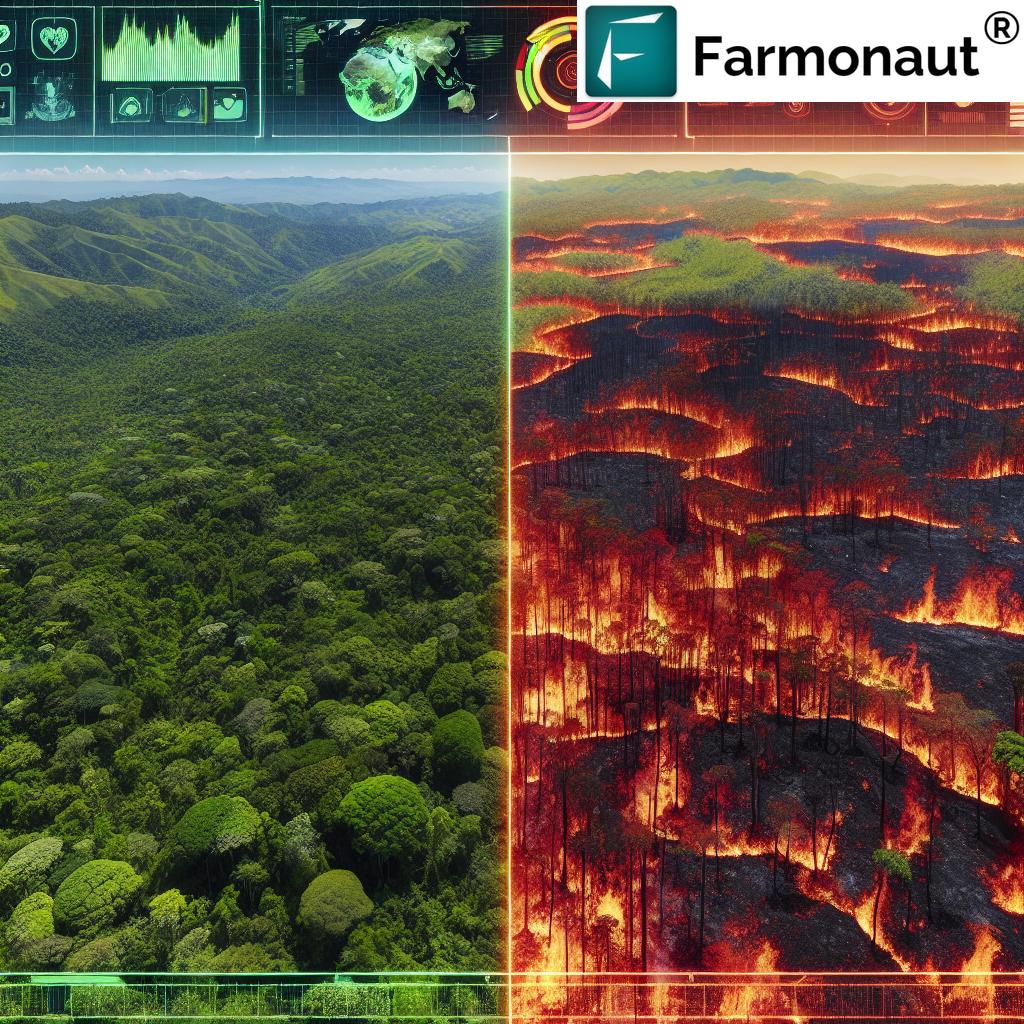Revolutionizing Agriculture: Farmonaut’s Hybrid Satellite Imagery for Comprehensive Crop Monitoring

In the ever-evolving world of agriculture, staying ahead of the curve is crucial for farmers and agribusinesses alike. At Farmonaut, we’re proud to introduce our latest innovation in precision agriculture – a groundbreaking hybrid satellite imagery system that’s set to transform the way we monitor and manage crops. This blog post will delve deep into the intricacies of this technology, its applications, and how it’s reshaping the agricultural landscape.
Table of Contents
- Understanding Hybrid Satellite Imagery
- The Technology Behind Farmonaut’s System
- Applications in Modern Agriculture
- Comparing Farmonaut’s Solution to Traditional Methods
- Case Studies and Success Stories
- The Future of Precision Agriculture
- How to Get Started with Farmonaut
- FAQ Section
1. Understanding Hybrid Satellite Imagery
Hybrid satellite imagery is a revolutionary concept in the realm of remote sensing and agricultural monitoring. But what exactly is it, and why is it so significant?
What is Hybrid Satellite Imagery?
Hybrid satellite imagery, as developed by Farmonaut, is an innovative approach that combines data from multiple satellite sources into a single, comprehensive image. This integration allows for a more holistic view of agricultural fields, providing insights that would be impossible to obtain from a single data source.
The Advantage of Multiple Perspectives
By merging various satellite data streams, we create a synergistic effect that enhances the overall quality and usefulness of the imagery. Each satellite type has its strengths:
- Optical satellites provide clear, visual representations of crop appearance
- Radar satellites can penetrate cloud cover and provide data in all weather conditions
- Hyperspectral satellites offer detailed information on plant health and soil composition
When combined, these diverse data sources paint a complete picture of field conditions, enabling farmers to make more informed decisions.
2. The Technology Behind Farmonaut’s System
At the heart of Farmonaut’s hybrid imagery system lies a complex network of technologies working in harmony. Let’s break down the key components:
Cloud-Based Processing
Our system leverages advanced cloud satellite imagery processing techniques to handle the massive influx of data from various satellite sources. This cloud-based approach allows for rapid processing and analysis, ensuring that farmers receive up-to-date information when they need it most.
Machine Learning and AI
To make sense of the vast amounts of data, we employ cutting-edge machine learning algorithms. These AI systems are trained to identify patterns and anomalies in crop growth, water stress, and overall crop health.
Data Fusion Algorithms
Our proprietary data fusion algorithms are the secret sauce that brings everything together. These sophisticated mathematical models combine data from different satellites, accounting for variations in resolution, spectral bands, and acquisition times to create a seamless, unified image.
3. Applications in Modern Agriculture
The applications of Farmonaut’s hybrid satellite imagery in agriculture are vast and varied. Here are some of the key areas where our technology is making a significant impact:
Crop Health Monitoring
Our system provides unparalleled insights into crop health. By analyzing spectral signatures across multiple bands, we can detect early signs of stress, disease, or nutrient deficiencies before they become visible to the naked eye.
Water Stress Detection
Water management is crucial in agriculture. Our hybrid imagery excels at identifying areas of water stress, allowing farmers to optimize irrigation practices and conserve this precious resource.
Yield Prediction
By combining historical data with real-time observations, our system can provide accurate yield predictions. This information is invaluable for planning harvests, managing supply chains, and making informed financial decisions.
Pest and Disease Management
Early detection of pest infestations or disease outbreaks can save entire crops. Our technology can spot subtle changes in plant health that may indicate the presence of these threats, allowing for timely intervention.
4. Comparing Farmonaut’s Solution to Traditional Methods
To truly appreciate the value of Farmonaut’s hybrid satellite imagery, it’s essential to compare it with traditional monitoring methods. Let’s look at how our system stacks up against drone-based and IoT-based farm monitoring:
| Feature | Farmonaut Satellite System | Drone-based Monitoring | IoT-based Monitoring |
|---|---|---|---|
| Coverage Area | Global | Limited by flight range | Limited by sensor placement |
| Frequency of Updates | Daily to weekly | As needed, weather-dependent | Real-time, but localized |
| Initial Setup Cost | Low | High (equipment + training) | Medium to High |
| Operational Complexity | Low (cloud-based) | High (requires skilled operators) | Medium (maintenance required) |
| Data Integration | Comprehensive, multi-source | Limited to visual and thermal | Limited to sensor capabilities |
| Scalability | Highly scalable | Limited by equipment and personnel | Requires additional sensors for scaling |
As the table illustrates, Farmonaut’s satellite-based system offers several advantages over traditional methods, particularly in terms of coverage, cost-effectiveness, and ease of use.
Case Study : Organic Vineyard in California
A 50-acre organic vineyard in Napa Valley used our crop health monitoring to manage pest infestations without resorting to chemical pesticides. The results were impressive:
- Early detection of a potential powdery mildew outbreak
- Targeted application of organic treatments, reducing overall usage by 35%
- Maintenance of organic certification while improving grape quality
6. The Future of Precision Agriculture
As we look to the horizon, it’s clear that precision agriculture will play an increasingly vital role in feeding the world’s growing population. Farmonaut’s hybrid satellite imagery system is at the forefront of this agricultural revolution, and we’re continually innovating to meet the challenges of tomorrow.
Integration with IoT and AI
The future will see even tighter integration between satellite imagery, ground-based IoT sensors, and advanced AI systems. This synergy will provide farmers with an unprecedented level of insight and control over their operations.
Climate Change Adaptation
As climate patterns shift, our technology will be crucial in helping farmers adapt. By providing early warnings of changing conditions and suggesting adaptive strategies, we’ll help ensure food security in an uncertain future.
Sustainable Resource Management
With increasing pressure on natural resources, our system will play a key role in optimizing water use, reducing chemical inputs, and promoting sustainable farming practices on a global scale.
7. How to Get Started with Farmonaut
Ready to revolutionize your farming practices with Farmonaut’s hybrid satellite imagery? Here’s how you can get started:
- Visit our website at https://farmonaut.com/app_redirect to learn more about our services.
- Download our mobile app:
- For Android: Google Play Store
- For iOS: Apple App Store
- Explore our API documentation at Farmonaut API Docs for advanced integrations.
8. FAQ Section
Q: How often are satellite images updated?
A: Our hybrid imagery system provides updates every 1-5 days, depending on the subscription level and geographical location.
Q: Can Farmonaut’s system work for small farms?
A: Absolutely! Our scalable solution is designed to benefit farms of all sizes, from small holdings to large industrial operations.
Q: Is internet connectivity required to use Farmonaut’s services?
A: While an internet connection is needed to receive updates and access our full range of features, our mobile app allows for offline viewing of downloaded data.
Q: How accurate is the crop health monitoring?
A: Our system boasts an accuracy rate of over 95% in detecting crop health issues, as verified through ground-truthing studies.
Q: Can Farmonaut’s technology work for all crop types?
A: Yes, our system is versatile and can be applied to a wide range of crops, from grains and vegetables to orchards and vineyards.
Q: How does Farmonaut ensure data privacy and security?
A: We employ industry-standard encryption and security protocols to protect all user data. Your farm information remains confidential and is never shared without explicit permission.
Q: Is training required to use Farmonaut’s system?
A: While our interface is user-friendly, we provide comprehensive tutorials and customer support to ensure you can fully leverage the power of our technology.
Q: Can Farmonaut’s data be integrated with other farm management software?
A: Yes, we offer API access for seamless integration with other agricultural software and systems. Check our API documentation for more details.
Conclusion
Farmonaut’s hybrid satellite imagery system represents a quantum leap in precision agriculture. By harnessing the power of remote sensing, advanced data processing, and artificial intelligence, we’re empowering farmers to make data-driven decisions that optimize yields, conserve resources, and promote sustainability.
As we continue to innovate and refine our technology, we remain committed to our mission of making advanced agricultural solutions accessible to farmers worldwide. Whether you’re managing a small organic farm or overseeing vast agricultural operations, Farmonaut is here to help you cultivate success.
Join us in shaping the future of agriculture. Explore Farmonaut today and experience the power of hybrid satellite imagery for yourself.
Ready to transform your farming practices? Get started with Farmonaut now!













